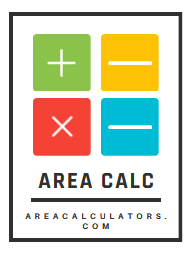From spinning wheels to orbiting planets — whenever something rotates, it holds energy. But how much energy is in that rotation?
The Rotational Kinetic Energy Calculator helps you find out. By entering an object’s moment of inertia and angular velocity, you can instantly calculate how much kinetic energy it holds due to its rotation.
Whether you're designing machines, studying physics, or analyzing sports motion, this tool turns rotational motion into measurable energy.
What the Rotational Kinetic Energy Calculator Does
This calculator estimates the kinetic energy of a rotating object, based on:
-
Moment of inertia (in kg·m²)
-
Angular velocity (in radians per second)
It outputs:
-
Rotational kinetic energy in joules (J)
It works for:
-
⚙️ Spinning mechanical parts
-
🛞 Wheels, turbines, and motors
-
🪀 Toys and sports gear
-
🌍 Planetary motion studies
-
📚 Physics experiments
Formula and Variables for Rotational Kinetic Energy
The energy in rotating systems is calculated using:
Rotational Energy Formula
E = ½ × I × ω²
Where:
-
E = Rotational kinetic energy (Joules)
-
I = Moment of inertia (kg·m²)
-
ω = Angular velocity (radians/second)
📊 Variable Table
| Variable | Meaning | Unit |
|---|---|---|
| I | Moment of inertia | kg·m² |
| ω | Angular velocity | radians/second |
| E | Rotational kinetic energy | Joules (J) |
🔢 Example Calculation
Let’s say a flywheel has:
-
Moment of inertia = 5 kg·m²
-
Angular velocity = 10 rad/s
E = ½ × 5 × 10²
E = 0.5 × 5 × 100 = 250 J
That means the flywheel holds 250 joules of kinetic energy while rotating.
How to Use the Rotational Kinetic Energy Calculator
-
Enter moment of inertia in kg·m²
-
Input angular velocity in rad/s
-
Click Calculate
-
Review the result – energy in joules
-
Apply the result to design, analysis, or learning tasks
Fast, focused, and physics-ready.
Where Rotational Kinetic Energy Is Used
🔩 Engineering Design – For motors, flywheels, and turbines
🛞 Automotive Systems – Wheels, brakes, driveshafts
⚙️ Machinery Analysis – Rotating parts and energy loss
🏏 Sports Science – Spinning balls, bats, and gear
🪐 Astrophysics – Planets, moons, and satellites
📚 STEM Education – Teaching rotational motion with numbers
Where things spin, energy flows.
Benefits of Calculating Rotational Kinetic Energy
✅ Design safer, more efficient rotating machines
✅ Predict stored energy in moving parts
✅ Analyze rotational systems with scientific precision
✅ Teach and learn physics with real examples
✅ Compare rotating vs. linear motion
More spin, more science, more success.
Tips for Accurate Rotational Energy Estimates
✔️ Use correct units — kg·m² for inertia, rad/s for velocity
✔️ Always square angular velocity
✔️ For disks or cylinders, use proper formulas to find moment of inertia
✔️ Convert from RPM to rad/s if needed (1 RPM = 0.1047 rad/s)
✔️ Match object shape to its inertia formula (solid disk, hollow cylinder, etc.)
Precision leads to performance.
Common Misunderstandings About Rotational Energy
❌ “Only mass matters in rotation.”
Wrong — mass distribution (inertia) is just as important.
❌ “RPM is the same as rad/s.”
Not directly. RPM must be converted to radians/second.
❌ “Rotational and linear energy are separate.”
They’re both kinetic energy — just different forms.
❌ “Inertia is constant for all objects.”
Inertia depends on mass and shape (distribution from axis).
❌ “You can't store much energy in spin.”
Flywheels and turbines store huge energy through rotation.
FAQs:
1. What is moment of inertia?
It’s a measure of how an object’s mass is spread around its rotation axis — more spread = higher inertia.
2. What unit should I use for angular velocity?
Radians per second (rad/s) — convert from RPM if needed.
3. Can I use this for spinning wheels?
Yes! This works for wheels, rotors, gears, and more.
4. What if I don’t know moment of inertia?
Use shape-based formulas (e.g., I = ½ × m × r² for a solid disk).
5. Is this useful for braking or safety analysis?
Absolutely — it tells how much energy must be absorbed or redirected.
6. Can I use it for planets or satellites?
Yes! Just plug in the correct inertia and angular velocity.
Conclusion:
The Rotational Kinetic Energy Calculator turns spin into science. Whether you're designing, analyzing, or learning, it gives you the power to understand and measure energy in motion.
🌀 When objects rotate, energy accumulates — now you can calculate it with clarity and confidence.
